伊东丰雄肖像
Portrait of Toyo Ito
“虽然伊东先生在他的职业生涯中创作了大量的建筑,但在我看来,他一直都投身在一个项目上——推动建筑的边界。为了实现这一目标,他不惜放手他之前的成就”—— 2013年普利兹克奖评委张永和
“Although Mr. Ito has built a great number of buildings in his career, in my view, he has been working on one project all along, — to push the boundaries of architecture. And to achieve that goal, he is not afraid of letting go what he has accomplished before.” — Yung Ho Chang, Member of the Pritzker Jury for 2013
日本建筑师伊东丰雄荣获2013年普利兹克建筑奖,伊东是普利兹克奖的第三十七位获奖者,也是第六位荣获此奖的日本建筑师。
Toyo Ito has been announced as the Pritzker laureate for 2013. Ito is the thirty-seventh recipient of the Pritzker Prize and its sixth Japanese recipient.
普利兹克评委会一致称赞伊东在组织建筑空间语言功能时表达个人情感的卓越能力,他的灵感常常来源于自然界中的有机结构和人类的感官。
The Pritzker jury applauded Ito for his ability to synthesize many architectural languages and functionalities in the expression of one personal “syntax,” inspired by the organic structures found in nature and the sensual nature of the human user.
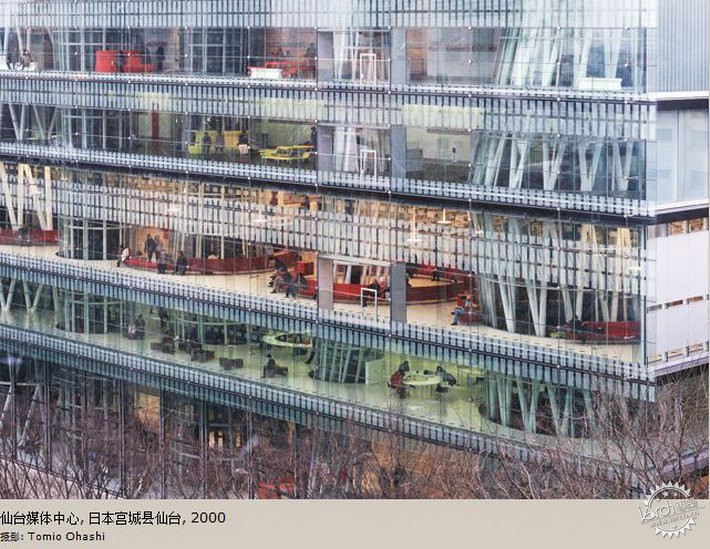
普利兹克委员会认为伊东丰雄是一名“永恒建筑的缔造者”,并称他“将精神内涵融入设计,以及其作品中所散发出的诗意之美。”在这些作品当中,委员选出了:仙台艺术媒体中心,他利用管柱结构有力地证明了这一点,从而使其内部出现新的空间品质;TOD‘S旗舰店,“建筑的外表也成为建筑的结构”; 东京的多摩美术大学图书馆等许多鼓舞人心的建筑。
Calling him a “creator of timeless buildings,” the Pritzker Jury further praised Ito for “infusing his designs with a spiritual dimension and for the poetics that transcend all his works.” Among those works, the Jury singled out his Sendai Mediatheque, whose innovative use of structural tubes “permitted new interior spatial qualities,” TOD’S Omotesando building in Tokyo, “where the buildingskin also serves as structure,” and Tokyo’s Tama Art University Library as particularly inspiring.
在得知建筑界的最高荣誉时,伊东谦虚地回应道::“建筑必然受到社会各方面因素的制约。在从事建筑设计时,我始终铭记:如果我们能够摆脱所有这些限制哪怕是一点,就能设计出更舒适的空间。但是,当一栋建筑完成后,我会痛苦地意识到自己的不足,然而它又转化成我挑战下一个项目的动力。因此这个过程也许在未来还要不断地重演。”
In response to the accolade, the highest award in the profession of architecture, Ito humbly expressed that, with each project, he only becomes more “painfully aware of [his] inadequacy, and it turns into energy to challenge the next project.” For that reason, Ito professed, “I will never fix my architectural style and never be satisfied with my works.”Read more of the Jury’s selection of Toyo Ito as the 2013 Pritzker Laureate, after the break…
仙台媒体中心/伊东丰雄
Sendai Mediatheque / Toyo Ito. Image © Nacasa & Partners
尽管评委会一再强调伊东在概念上的创新是他获奖的原因,但他们也提到在培养年轻建筑师的卓越贡献(他的工作室已培育了许多著名建筑师,包括2010年普利兹克获奖者妹岛和世和西泽立卫)以及他的社会责任感:他为在2011年日本大地震中的受灾灾民所设计的“共有家园”及小型社区空间
While the Jury stressed Ito’s conceptual innovation as the reasoning for his selection, they also mentioned his commitment to the mentorship of young architects (his studio has nurtured many renowned architects, including 2010 Pritzker Prize Laureates Kazuyo Sejima and Ryue Nishizawa) as well as his social responsibility, giving mention to his work on the “Home-for-All” project, providing small communal spaces for those affected by the earthquake in Japan in 2011.
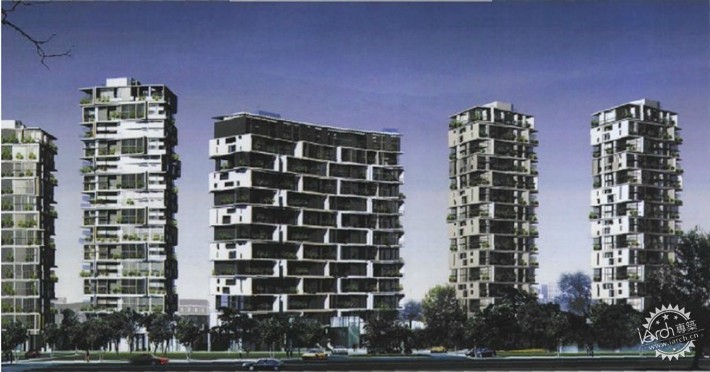
正是这个项目迫使伊东重新定义什么是建筑,建筑是为谁而做的。就像伊东在普林斯顿出版社发行的<< Toyo Ito – Forces of Nature>>提到:“在现代,建筑最受关注的部分是它的独创性,因此,最原始的主题——建筑为何而建?为谁而建?都已经被忘了。一个失去了所有的灾区,为我们提供了一次以新的眼光重新思考什么是真正的建筑。“共有家园”包含了小型建筑物,但它强调了在现代什么形式的建筑才是最需要——甚至质疑了最原始的主题,建筑的真正意义。”
It is this project that Ito actually holds most dear, as it forced him to re-conceptualize what is architecture and who it is for. As Ito says in Toyo Ito – Forces of Nature, published by Princeton Architectural Press: “In the modern period, architecture has been rated highest for its originality. As a result, the most primal themes—why a building is made and for whom—have been forgotten. A disaster zone, where everything is lost offers the opportunity for us to take a fresh look, from the ground up, at what architecture really is. ‘Home-for-All’ may consist of small buildings, but it calls to the fore the vital question of what form architecture should take in the modern era—even calling into question the most primal themes, the very meaning of architecture.”
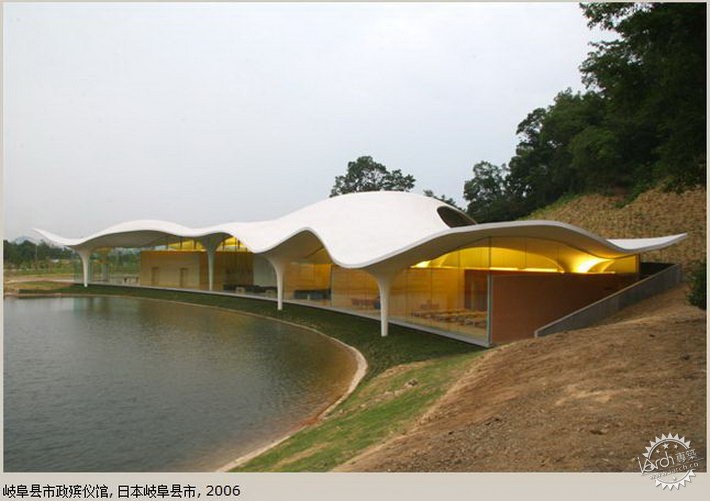
实际上,伊东丰雄在威尼斯双年展上接受采访时和我们分享道:“建筑首先要考虑的是它要服务的人群。在现代社会,我认为99%的建筑已经成为了经济活动 的工具,我对这感到非常遗憾。”
Indeed, as Toyo Ito shared with us in an interview given at the Venice Biennale, for him, architecture is first and foremost for the people it serves: “In contemporary society, I think that 99% of architecture has become the instrument for economical activities, and I am very sorry for that. Because I think that architecture is supposed to be something that links people to other people, architecture has to become a form of cooperation, a co-operational body for people. It should not be something that is controlled by economy, but that creates a relationship of trust among people. This is what architects are supposed to do when they create architecture.”
在获得普利兹克奖之前,伊东已经获得了一系列著名奖项,包括2010年第22届高松宫殿下纪念世界文化奖;2006年英国建筑师皇家学会皇家金质奖章;2002年第8届威尼斯国际建筑双年展终身成就金狮奖。
The Pritzker Prize is the latest in a succession of prestigious awards for Ito, who also received the 22nd Praemium Imperiale in Honor of Prince Takamatsu in 2010; The Royal Institute of British Architects’ Royal Gold Medal in 2006; and the Golden Lion for Lifetime Achievement for the 8th Venice Biennale International Exhibition in 2002.
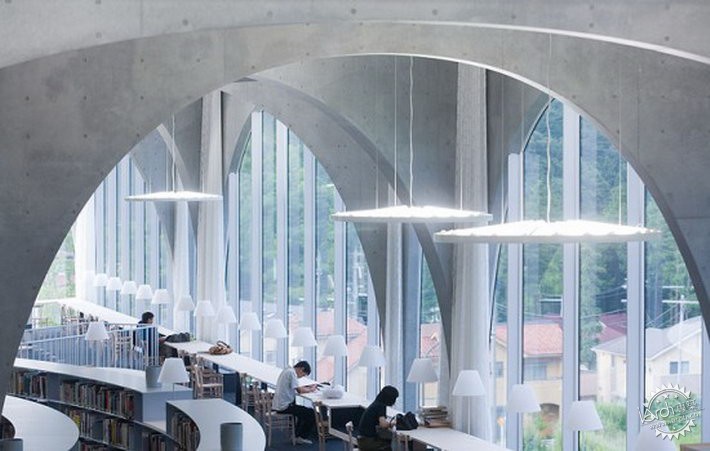
2013年评委会的成员包括:英国的评委会主席帕伦博勋爵,他是世界知名的建筑资助人,现任蛇形画廊信托公司董事长,曾担任英国艺术委员会和泰特美术馆主席,纽约现代艺术博物馆密斯•凡德罗档案馆前任董事;亚历山大•阿拉维那,智利建筑师和埃勒门达建筑公司常务董事;美国最高法院大法官斯蒂芬•布雷耶;中国著名建筑师和教育家张永和; 来自澳大利亚的2002年普利兹克建筑奖得主格伦•马库特;来自芬兰的尤哈尼•帕拉斯马是一名建筑师、教授和作家;常务理事玛莎•索恩西班牙马德里IE建筑学院对外事务副院长。
The 2013 Prizker Jury was made up of The Lord Palumbo, internationally known architectural patron of London, chairman of the trustees, Serpentine Gallery; Alejandro Aravena, architect and executive director of Elemental in Santiago, Chile; Stephen Breyer, U.S. Supreme Court Justice, Washington, D.C.; Yung Ho Chang, architect and educator, Beijing, The People’s Republic of China; Glenn Murcutt, architect and 2002 Pritzker Laureate of Sydney, Australia; and Juhani Pallasmaa, architect, professor and author of Helsinki, Finland. Martha Thorne, associate dean for external relations, IE School of Architecture & Design, Madrid, Spain, is the executive director of the prize.
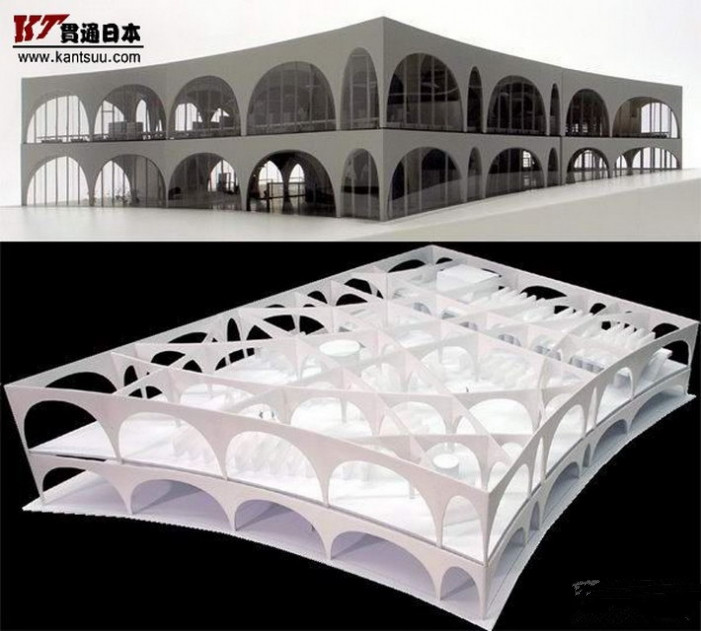
东京的多摩美术大学图书馆/伊东丰雄
University Library / Toyo Ito
建筑。四十年来致力于打造卓越建筑,他的作品涵盖了图书馆、住宅、公园、剧院、商场、写字楼及展览馆等诸多类型,每一次都力求建筑上的突破与超越。他是一位具有独特天赋的专业人士,善于在每项任务及每块基地中寻求机遇,并投身于发现新事物的过程。
Throughout his career, Toyo Ito has been able to produce a body of work that combines conceptual innovation with superbly executed buildings. Creating outstanding architecture for more than 40 years, he has successfully undertaken libraries, houses, parks, theaters, shops, office buildings and pavilions, each time seeking to extend the possibilities of architecture. A professional of unique talent, he is dedicated to the process of discovery that comes from seeing the opportunities that lie in each commission and each site.
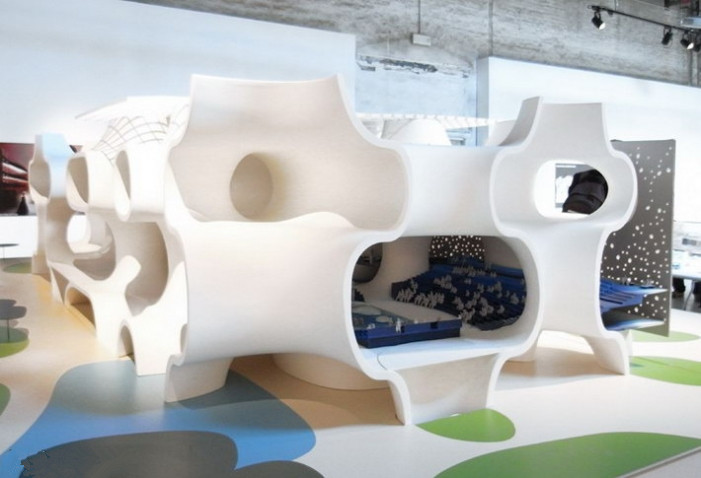
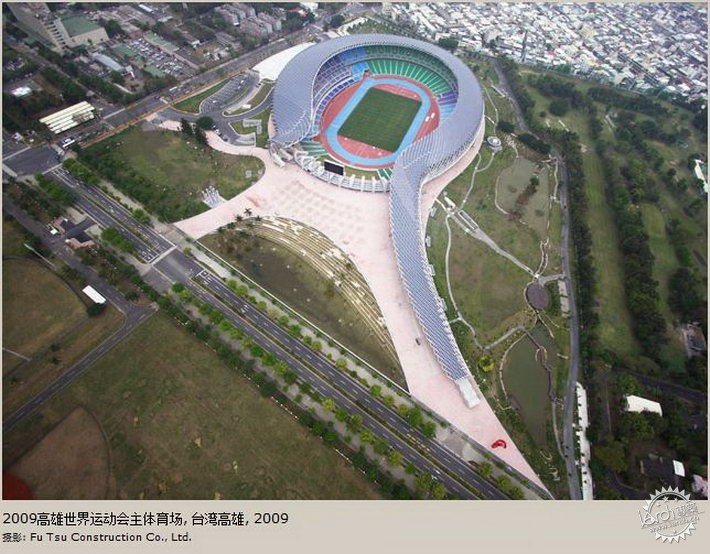
研究过伊东丰雄作品的人都会发现其作品中不仅涵盖不同的使用功能,而且还蕴含着丰富的建筑语言。他逐步发展并完美了一套独特的建筑语法,把结构与技术层面上的创造发明与清晰的形式语言相结合。他的建筑形式既不依从于极简主义也不追随参数化设计。对伊东来说,情况不同,得出的答案亦不相同。他的早期作品都富于现代性,使用质地较轻的标准工业材料及部件,例如:钢管、金属网、穿孔铝箔片及透气性织物。他后期极具表现力的作品则大多使用钢筋混凝土。伊东丰雄能用一种极其独特的方式,将结构、空间、环境、技术及场所建立于一个平等的立足点之上。尽管他作品所呈现出的平衡感看似简单,但却是他精湛技艺及同时驾驭建筑各个方面能力的结晶。他的作品结构复杂,但又巧妙地融为一体,令建筑本身焕发出宁静与祥和,而使用者则能自由自在地在其中从事各项活动。
Whoever reviews Ito’s works notices not only a variety of functional programs, but also a spectrum of architectural languages. He has gradually developed and perfected a personal architectural syntax, which combines structural and technical ingenuity with formal clarity. His forms do not comply with either a minimalist or a parametric approach. Different circumstances lead to different answers. From the outset, he developed works that were modern, using standard industrial materials and components for his lightweight structures, such as tubes, expanded meshes, perforated aluminum sheeting and permeable fabrics. His later expressive works have been formed using mostly reinforced concrete. In a truly extraordinary way, he is able to keep structure, space, setting, technology, and place on equal footing. Although the resulting buildings seem effortlessly in balance, they are the result of his deep knowledge of his craft and his ability to deal with all the aspects of architecture simultaneously. In spite of the complexity of his works, their high degree of synthesis means that his works attain a level of calmness that ultimately allows the inhabitants to freely develop their activities within them.
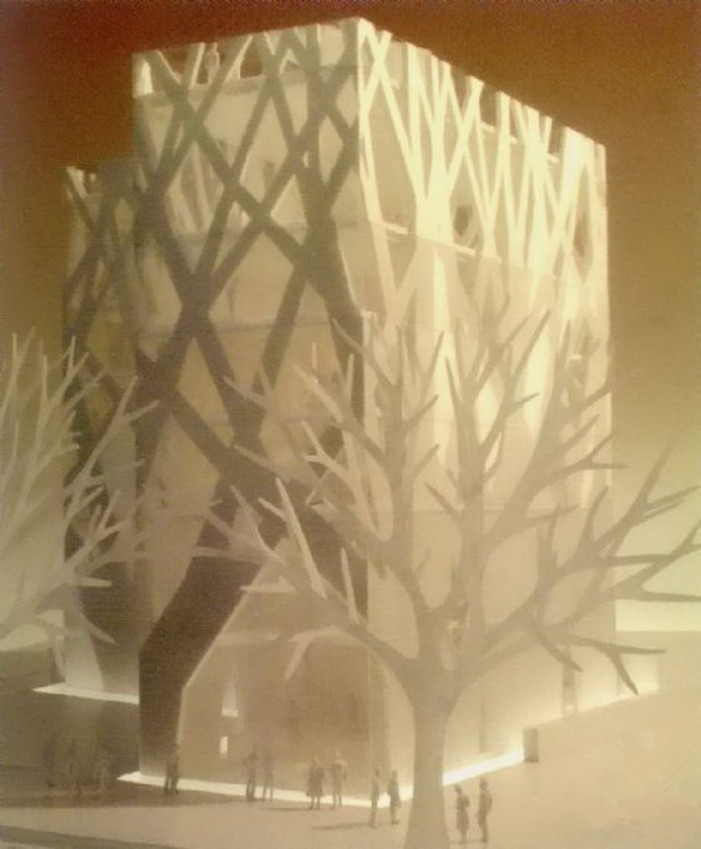
“创新”一词经常被用来描述伊东丰雄的作品。2002年建于布鲁日的临时展馆及2004年建于东京的 TOD’s 表参道店都集中体现了这一特质,因为它们的外表同时也是其建筑结构。伊东丰雄的创新还体现在他对于传统材料的非传统运用。例如,建于新加坡的怡丰城购物中心就使用了钢筋混凝土来表现流动的有机形式。此外,在他的建筑里还可以看到很多新的技术发明,比如位于大馆的树海巨蛋还有横滨的风之塔。这种创新来源于伊东丰雄在提出设计方案之前对各个层面缜密及系统的分析。
Innovative is a word often used to describe Toyo Ito’s works. This is apparent in the temporary pavilion created in Bruges in 2002 and the TOD’S building in Tokyo in 2004 where the building skin also serves as structure. Innovation can also be demonstrated through his use of traditional materials in non-conventional ways, such as using concrete to create flowing organic forms as he did in the commercial development of VivoCity in Singapore. In addition, his buildings abound with new technological inventions, as can be seen in the Dome in Odate or the Tower of Winds of Yokohama. This innovation is only possible through Ito’s process of carefully and objectively analyzing each situation before proposing a solution.
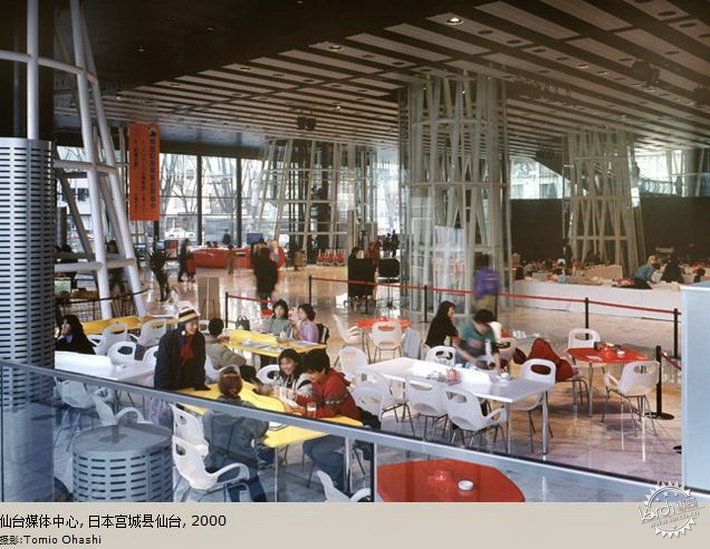
伊东曾经说过,他力求建筑的流畅,而不受制于现代建筑的局限。在2000年建成的仙台媒体中心,他利用管柱结构有力地证明了这一点,从而使得其内部出现新的空间品质。在台中大都会歌剧院,水平与垂直交错的空间网络提供了交流与相遇的机会。在僵死的网格结构中寻求自由,伊东非常注重关系 – 房间之间的,内外之间的,建筑与环境之间的。伊东丰雄作品的灵感来源于大自然的规律,这一点从其建筑的有机结构和表皮的高度统一中显现出来。
Ito has said that he strives for architecture that is fluid and not confined by what he considers to be the limitations of modern architecture. In the Sendai Mediatheque, 2000, he achieved this by structural tubes, which permitted new interior spatial qualities. In the Taichung Metropolitan Opera House, the horizontal and vertical network of spaces creates opportunities for communication and connection. Seeking freedom from the rigidity of a grid, Ito is interested in relationships — between rooms, exterior and interior, and building and surroundings. Toyo Ito‘s work has drawn on inspiration from the principles of nature, as evidenced by the unity achieved between organic-like structures, surface and skin.
伊东丰雄的个人创作是带有公共责任感的。在公共性的建筑上进行创新的复杂及风险是高得多的,但这并未使伊东却步。他说,建筑不仅要满足人的物质需求,同时也要满足人的感官需求。在他众多鼓舞人心的作品当中,2006年建成的岐阜县殡仪馆,2007年于东京建成的多摩美术大学图书馆,还有2002年于伦敦蛇形画廊建成的亭子这三个建筑,充分表达了伊东对人及其在建筑内部活动的认知和理解。他为在2011年日本大地震中的受灾灾民所设计的“共有家园”及小型社区空间则直接表达了他的社会责任感。
Toyo Ito’s personal creative agenda is always coupled with public responsibility. It is far more complex and riskier to innovate while working on buildings where the public is concerned, but this has not deterred him. He has said that architecture must not only respond to one’s physical needs, but also to one’s senses. Of his many inspiring spaces, the Municipal Funeral Hall in Gifu Prefecture of 2006 or the Tama Art University Library in Tokyo, 2007 or the Serpentine Gallery Pavilion in London in 2002 are but three examples that illustrate Ito’s cognizant understanding of the people and the activities within his buildings. His work in favor of “Home-for-All” or small communal spaces for those affected by the earthquake in Japan in 2011 is a direct expression of his sense of social responsibility.
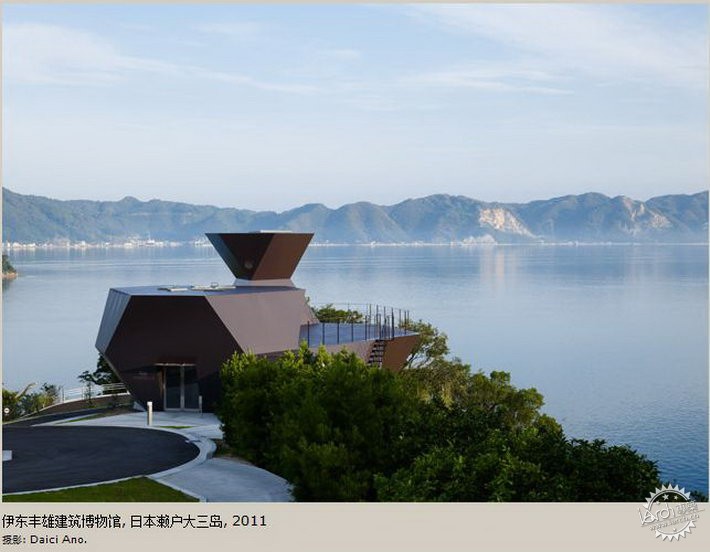
为未来培养建筑师也是伊东丰雄一向关注的焦点。这体现在他持之以恒的教学工作以及最近于金治市大三岛重建的银色小屋,作为伊东丰雄建筑博物馆的一部分,以用于工作坊及研究项目。另外,没有比他的工作室再合适不过的例子了,那里就好像一所学校,欢迎年轻的建筑师前来工作和学习。很明显,在力求创新及不断将建筑边界向前推进的过程里,伊东并未将其身后之路封闭。作为先行者,他鼓励人们在他探索的基础上去发现自己发展的方向。可以说, 伊东作为一个真正意义上的大师,他不仅汲取氧气,还制造氧气。
The education of future architects has always been a concern of Toyo Ito. This is apparent in his teaching positions and in the recent rebuilding of the Silver Hut as part of the Toyo Ito Museum of Architecture in Omishima, which is used for workshops and research. Perhaps a more perfect example is his office, which is like a school where young architects come to work and learn. It is evident that while innovating and pushing the boundaries of architecture forward, he does not close the road behind him. He is a pioneer and encourages others to benefit from his discoveries and for them to advance in their own directions as well. In that sense, he is a true master who produces oxygen rather than just consumes it.
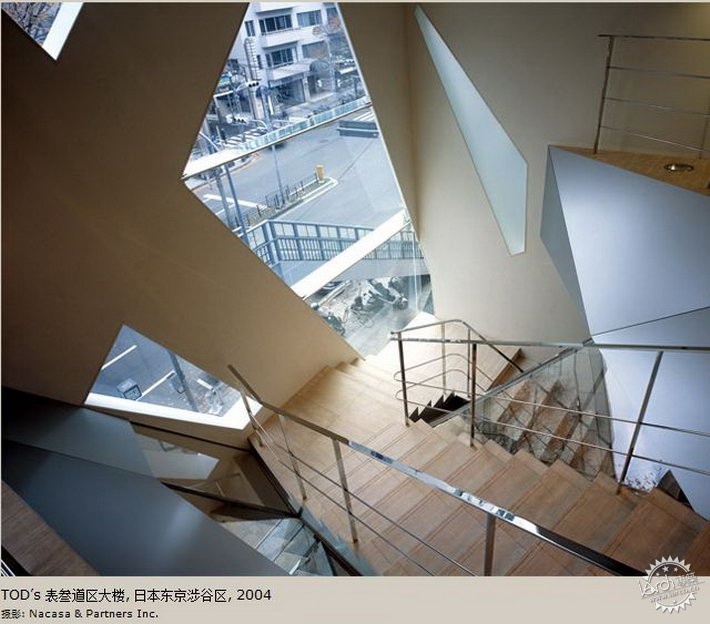
伊东丰雄是永恒建筑的缔造者,同时他还大胆开辟新的路径。他的建筑作品里充满了乐观,轻盈及喜悦,又同时具备独特性与普遍性。基于这些理由,以及他将结构、空间及形式融为一体以创造温馨场所的能力,也基于他对景观的敏感,将精神内涵融入设计的努力,以及他作品中所散发出的诗意之美,2013年度普利兹克建筑奖授予伊东丰雄。
Toyo Ito is a creator of timeless buildings, who at the same time boldly charts new paths. His architecture projects an air of optimism, lightness and joy, and is infused with both a sense of uniqueness and universality. For these reasons and for his synthesis of structure, space and form that creates inviting places, for his sensitivity to landscape, for infusing his designs with a spiritual dimension and for the poetics that transcend all his works, Toyo Ito is awarded the 2013 Pritzker Architecture Prize.
特别鸣谢翻译一组01号 罗晓茜 提供的翻译,译稿版权归译者所有,转载请注出明处。
|
|
